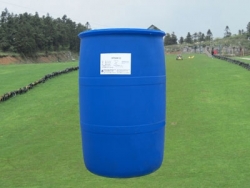Subtilis surfactant (Surfactin), also known as subtilis peptide, is a cyclic ester peptide produced by Bacillus subtilis. It consists of a nonapeptide linked to β-hydroxy-ω-methylmyristic acid by a cyclic depsipeptide bond, and is another well-known class of biosurfactants with antimicrobial properties. According to the amino acid sequence, Surfactin is divided into three types: Surfactins A, B, C. At the amino acid position, Surfactin-A has L-leucine, Surfactin-B has L-valine, Surfactin-C has L-isoleucine, and the lactone ring related to the amino acid position is composed of C14-C15β-hydroxy fatty acid form. Bacillus subtilis surfactant is a highly efficient biosurfactant, the surface tension of 0.1 mol/L sodium bicarbonate solution containing only 0. 005% Bacillus subtilis surfactant dropped to 27. 9mN/m.
Bacillus subtilis surfactant is an effective biosurfactant, but compared with the previous 2 biosurfactants, there are fewer studies on its application in biodegradation restoration.
For the first time, Awashti et al. discussed the promotion effect of Bacillus subtilis surfactant (Surfactin) on the biodegradation of endosulfan, an insecticide. Olivera et al. isolated a bacterium subtilis O9 from polluted sediment, which can secrete Bacillus subtilis surfactant when sucrose is used as substrate. They added Bacillus subtilis surfactant to the polluted bottom mud, and found that only 6.8% of aliphatic hydrocarbons and 7.2% of aromatic hydrocarbons were not degraded after 10 days.
When performing in-situ restoration, the use of biosurfactants will have certain toxicity and impact on the indigenous microbial populations living in it. In addition, because it can be degraded by microorganisms, its metabolites may be more toxic. Therefore, the existence of biosurfactants may cause certain pollution to the environment and increase the burden of environmental pollution. It can be seen that strengthening the research on the potential impact of biosurfactants on the environment and their biodegradation characteristics will provide an important scientific basis for effectively controlling the environmental pollution caused by biosurfactants and rationally utilizing biosurfactants. When performing on-site surfactant solubilization repair, comprehensive biosurfactant toxicity and environmental hazard experiments must be carried out to ensure the safety of biosurfactant use.

In addition, when performing in situ remediation, the applied biosurfactants may also be adsorbed onto the soil, which may also affect the physical, chemical, and biological properties of the soil. The presence of biosurfactants will reduce the surface tension of the soil-water interface, causing changes in the pressure drop in the soil pores, resulting in changes in the distribution of water and air in the soil pores, and ultimately changing the original physical properties and redox conditions of the soil. , with potential negative impacts. Research on the interaction of surfactants with the soil environment is very scarce, but it is very worthy of attention and in-depth study.